#it’s an exquisite tragedy on multiple levels
Explore tagged Tumblr posts
Text
BEING A LIST OF THE THIRTEEN GREATEST RIVERDALE LINES, ON THE OCCASION OF THAT SHOW'S TERMINATION
As our much loved/hated show comes to an end, I feel compelled to record, for posterity, the greatest thirteen pieces of dialogue to spring from the pens of RAS and his henchmen. It was, of course, originally a top ten list, but I simply could not exclude a few of these treasures. Without further ado:
13.
“I dropped out in the 4th grade, to sell drugs, to support my nana.”
“That means you haven't known the triumphs and defeats, the epic highs and lows of high school football.”
Spoken by: an inmate of Leopold and Loeb Juvenile Detention Center, and Archie Andrews.
In: 3 x 2
Yeah, okay, this one had to be on the list. It’s funny, I’ll admit. It’s a great example of the overwrought semi-sincere melodrama that helped make this show so special. It’s low on the list largely because The Normies got their hands on it, so every time I hear someone make a reference I get all “do not cite the deep magic to me, witch.”
12.
“No! No! What are we supposed to do now? I’m horny as heck!”
Spoken by: Archie Andrews
In: 7 x 16
Season 7 is undeniably dreadful, and yet there are diamonds in the rough. The occasion is the failure of a projector, just as Archie and Reggie prepare to watch a pornographic film. The utter desperation with which KJ Apa delivers this line is exquisite. One is made to feel they are witnessing a genuine tragedy.
11.
“Tonight, they’re making an exception and debuting a cover of the song my parents claim they were listening to the night Jason and I were conceived.”
Spoken by: Cheryl Blossom.
In: 1 x 1
Really a fantastic line. A wonderful encapsulation of the casual absurdity of Cheryl’s character, and a foretaste of the lunacy we would plumb in later episodes and seasons.
10.
“In case you haven’t noticed, I’m weird. I’m a weirdo. I don’t fit in and I don’t want to fit in. Have you ever seen me without this stupid hat on? That’s weird.”
Spoken by: Jughead Jones
In: 1 x 10
A genuine classic. “High school football” before “high school football.” One is never entirely sure just how sincere the line is meant to be, both on a meta-level and in-universe. A perfect illumination of Jughead’s pretentiousness. It is made all the better by the occasional cuts to Lili Reinhard’s agonized face.
9.
“At the last dance, multiple students were murdered.”
Spoken by: Principal Holden Honey.
In: 4 x 2
Delivered as an explanation to Toni and Cheryl, as to why there would be no school dance this year. Principal Honey is in fact supremely rational in the cancellation of this dance. This being Riverdale, he is of course treated as an unreasonable tyrant.
8.
“Bro, I know all the secrets of this universe.”
Spoken by: Archie Andrews (evil version)
In: 6 x 5
Spoken as evil Archie reveals his evil plan to keep the parallel universes apart. KJ Apa’s delivery once again makes this line. He is comically sinister. Strangely, he sells it.
7.
“A Vughead kiss, right now, in the present might be precisely what it takes to save a future Bughead from imploding.”
Spoken by: Jughead Jones.
In: 2 x 14
One of those lines that both makes me laugh and makes me genuinely angry. This was a fairly early season, and this may have actually been the first line to get me asking, ‘did they genuinely write and deliver that?’ Extra points for use of the atrocious ‘Vughead’ portmanteau ship name rather than ‘Jeronica.’
6.
“I’m the ultimate wild card. I am the daughter of The Black Hood. The nightmare from next door. I’m training with the FBI and I’m coming for you, you psycho bitch.”
Spoken by: Betty Cooper
In: 4 x 14
Just delicious. Another one of those lines that leaves you somewhat unsure whether or not the writers understood how genuinely hysterical it was. “The Nightmare from Next Door” sounds like an announcer hyping up a wrestler. Spoken with a raw sincerity by Lili Reinhart. Also points for the heavy homoeroticism between Betty and Donna.
5.
“For I am Cheryl Blossom, Queen of the Bees.”
Spoken by: Cheryl Blossom.
In: 5 x 16.
This one really doesn’t require any elaboration.
4.
“Elijah ascended��and I will, too.”
Spoken by: Edgar Evernever.
In: 4 x 5.
Admittedly, this one is only spectacular with context. But in context—the context being that Chad Michael Murray delivers this line while dressed like Evel Knievel and standing in a cartoon rocket right out of a Warner Bros cartoon—it becomes utterly magnificent.
3.
“It’s not queer baiting, it’s saving the world.”
Spoken by: Veronica Lodge.
In: 6 x 22.
It’s actually hard for me to decide whether this one is funnier with or without context. Without context it’s wonderful, but it possibly becomes even funnier when you know that the context is that Veronica needs to kiss Cheryl to transfer superpowers into her body so she can turn into a Scarlet Witch knock-off and stop a magic comet summoned by Sephiroth an English wizard who is also the Devil.
2.
“If there’s no wedding reception, it means the Gargoyle King has won.”
Spoken by: Kevin Keller.
In: 3 x 12.
One of my personal favorites. This is a perfect line because like #3, it requires no real elaboration. There is absolutely no context in which it isn’t hysterical.
1 .
“Word of my exploits serving Nick his comeuppance has seeped into the demimonde of mobsters and molls my father used to associate with, so the five families are sending their youngest and brightest, their ‘princes,’ as it were to, well, come court the rare Mafia Princess who can belly up to the bar with the big boys.
Spoken by: Veronica Lodge.
In: 2 x 20.
This is, in my opinion, the all-timer. Every word is perfect. The rapid-fire alliteration. The use of the word ‘demimonde.’ The entirely unnecessary addition of ‘as it were.’ This is borderline Dr. Seuss. The fact that Camila Mendes delivered it without cracking a smile should have won her an Emmy. No. An Oscar. This line is Riverdale.
#riverdale#veronica lodge#jughead jones#betty cooper#archie andrews#kevin keller#cheryl blossom#edgar evernever
7K notes
·
View notes
Text
IWTV 2.8: And that's the End of it. There's Nothing Else.
Well. Damn.
"Arson is a crime of passion."
We always knew how this was going to end and it was both satisfying and anti-climatic. The fire? I wanted more of it. I wanted to watch the Theatre des Vampires WRITHE while it burned. The tragedy of Claudia's death, the snuffed potential of her immortality, in episode seven demanded it. The way she fought for herself and Madeleine, the way she fought SO HARD to be heard demanded a reckoning reflected from the eyes of her tormentors. I wanted the coven, and especially Santiago to SUFFER.
The ending was peculiarly cold in comparison to Alderman Fenwick back in season 1. His death was so personal in a way that the fire, despite its passion, was not. Maybe its because most of the coven were locked in their caskets so we only got their screams when I wanted them to SEE their executioner and look him in the eyes while he tore them to pieces. Claudia DESERVED that level of retribution.
pirateshelly wrote about Claudia's storyline here:
https://www.tumblr.com/pirateshelly/758254364119990272?source=share
GO Read it.
I include my comment there because I think the post perfectly encapsulates what was wrong with Claudia's story arc. To note, despite the insistence of The Great Laws, there was nothing wrong with Claudia, and that break has everything to do with the change in her circumstances from book to show and the failure of the show runners to account for that change as explicitly as they did for Louis.
In the books, Claudia is turned at 5 years old. In the Neil Jordan movie, she's 11. In the show, she's meant to be 14. 14 isn't so young that she can't age into and move through society. I looked 16 when I was 20, it's not a far fetch. The writer's needed something else to convince us that Claudia was truly going to break from having an immortal life. There were really small suggestions, but mostly we were just TOLD this would happen. That old show don't tell rule would have fixed alot here. But then we got Madeleine and it was a beautiful future that unfolded. Better than Claudia needing a mommy, Claudia had a friend, maybe a future lover, someone who FINALLY put her FUCKING FIRST!
Claudia in season 2 was otherwise woefully underutilized.
Shifting Louis' backstory, the era he lived in, his race, his sexuality, and then making explicit the nature of his relationship with Lestat blew the story wide open. There was so much room for this story to be made relevant and truthful. Rolin Jones said that changing Louis's story was a choice to place it in a "time period that was as exciting aesthetically as the 18th century was without digging into a plantation story that nobody really wanted to hear now". I'd like to get an amen right now because as a Black person in America I am REAL tired of every historical story of the black experience being located during slavery, the Civil Rights movement, or the modern, urban ghetto. There is a place for those stories, they are important and necessary and we HAVE to continue to have those conversations and remember those histories. But I also want new things shown new ways and nuanced to reflect the millions of different experiences that make up the lived experience.
Louis was made active and full of agency and anger. Making him a businessman with a certain amount of power and authority and then having him deal with TPTB in the skin he was born in was exquisite. He lived in multiple worlds and we really got to see and understand that, but it wasn't all misery. The circumstances of his mortal birth were allowed to live and breath on the surface of his skin in a way that Claudia was not gifted. Season 1 told the story of what it meant to be a queer, black man in America. It glanced very briefly on what it meant for Claudia as young and black and female. Three different states of being that impacted her different ways and then coalesced into what could have been greater than her sense of disconnect from Louis or her rage at Lestat. Arguably, Season 2 did more to interrogate her status. A second class citizen as a mortal and made doubly so by the condition of her re-birth.
Episodes 3 and 4 make the most of her, I think. The potential for her immortal life is suggested in episode 6, but perhaps in a meta reading of the stoey at large, there is no room for Claudia. She haunts the interview in the same way that she haunts Louis and as we later learn, Lestat. In the books, Claudia's ghost is imprinted upon her makers, but she is seldom truly centered.
That she is an underused and voiceless character being marched towards an end established from S1E1, it's like the nuance of her life isn't as compelling a thing to explore. I don't know. I think there's a lot to ruminate on and dig out about Claudia in the series, but too much of it is sublimated to the men's stories. I wanted more of it to be explicit. She is an excuse for Louis rage in the last episode, a powder keg for Louis to strike himself against. The last straw.
I loved that Louis was a little mad when he got out of the crypt. The voices and the visions could have lasted longer.
"All the madness and rage exited my body and nothing replaced it." What must that be like? To love someone so much and to know that they didn't love you as much? For Armand to know that Louis only picked him to spite Lestat. In reality not even second best because that place belongs to Claudia.
Fuck.
And then Armand and the truth. I wasn't surprised. Last episode, I was surprised that it was apparently Armand who turned the tide in Louis's sentencing. I initially thought it was Lestat because I didn't think Armand had that much power considering the size of the group. Maybe that's my novel bias kicking in. So when the reveal was that it was Lestat after all … again, not surprised.
And then it takes us all the way back to Omikase. Chef's choice because Louis leaves believing what Lestat wants him to believe. How he ultimately tells Louis that he "gave" him to Armand. A toxic ass phrase especially charged by the race bending, but even on its own … who the fuck gets to say or do that? Lestat for all that he loves, has no clue how to take care of people or treat.
In the end, Louis doesn't kill Armand, although he has every right. I LOVED those closing scenes. The MS and Armand's hand written notes. Daniel's triumphant reveal of Armand's duplicity. I NEVER liked Armand because -- MIND CONTROL -- although there were times were I felt sorry for the dude. He legitimately seemed to love Louis. But, hey, then you don't make a sacrifice of your lover to your old friends. The fact that he really was going to sit there and let them kill Louis? Yeah, nah, I'm good on him.
Lestat is still just as terrible. Once again, he chooses Louis over Claudia. Always someone else over Claudia and it's not until it's way too late does he understand that he was her father, too. Fucking asshole.
I'm excited for season 3. Someone posted how Louis's story is wide open and how anything is possible for him given the reimagining in the show. I 100% agree. The Vampire Chronicles were written as the Lestat Show. It's exciting to see them bring Louis to the forefront. I'm betting that they're not going to leave him tucked away in a crumbling plantation or even sitting at the top of a tower in Dubai. He issued a challenge at the end of episode 8 worthy of book Lestat at his most rebellious.
The potential is infinite for how this all can go. I can't wait to see it.
13 notes
·
View notes
Text
DRAMA OF LIFE
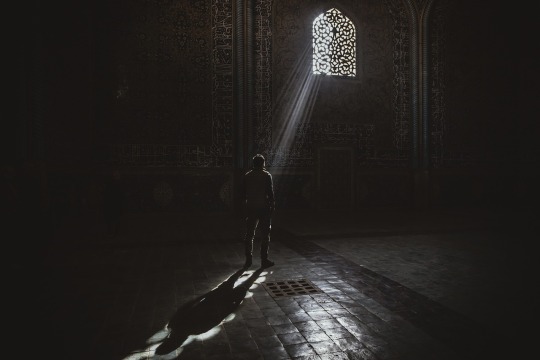
The "drama of life" refers to that illusory interplay connecting individual emotions, experiences, and entanglements we all enact in our personal lives to create a name and fame to project our persona in life. The world is a stage, and we all play a unique role in becoming something while awake and alive. Each of us plays our part in a universal set-up that cuts across cultures, castes, and creeds in a limited space and time, often knowingly and sometimes not consciously or subconsciously aware. This experiential life may be a journey, dance, theatre, or random events. Still, you will agree it is undeniably exquisite, versatile, and deeply human, where from nothing, you become something to go back into nothing when the drama ends.
In this drama, there is always uncertainty. However confident or learned you may be, events and incidents are never the same and lasting. You must adjust and adapt to perform differently as per every circumstance. The play continues in a dichotomy with dualities, where you must choose and balance between the good and the evil, plus and minus, positive and negative, and the material with the spiritual. It all depends upon how your mind intelligently takes you on a roller-coaster ride between the dual forms of this and that for your likes and dislikes, determining how good a player you are in this dance or drama of life.
The mind and the world we perceive are illusory since science and philosophy admit that we are only vacant in space. All that exists is energy, which can change virtually into particles possessing specific significance and activity in the universe's nothingness. Love, reality, and truth are illusory because they change with space, time, and circumstances. It means our concept of reality, which we perceive through our thoughts, feelings, and experiences, merely interprets what we feel as tangible, which is not. Actual reality needs to be unchanging, uninterrupted, and permanent, like the sky and not the clouds that cover the sky. The philosophy of Advaita Vedanta considers only the ultimate reality. The absolute non-dual energy from which all subset interchangeable energies in matter and consciousness emerge and return to superimpose on the ultimate reality. It tells us that illusions occur in the drama we play in life, presuming permanence to temporal desires and emotions, identifying and attaching, and suggesting that what we believe as actual and permanent is not tangible in how we think, believe, and feel.
A lot depends in this drama on the control over our random and reckless mind, with ever-changing, unmethodical thoughts interfering and distracting from your focused course of action, and whether you can mindfully awaken your soul to check and guide the mind. Also, a lot depends on how unforeseen changes by chance play their role, depending on your choices within the scope of your temporal reality. No path, journey, or play is smooth for any hero or a commoner. How you maneuver and steadily continue with adaptability and resilience defines whether you are a hero, coward, villain, or loser.
There will always be stress and strain in this play between our wants and achievements, between the highs and lows in our desires and emotions, the triumphs and the unwanted tragedies, and the pleasure and pains differing in each actor or player performing on an individual's level of intelligence and knowledge. In this drama, if you wish to be a star champion, you must be highly alert, attentive, and aware of everything, enhancing your consciousness to excel in your ambitious performances. However, despite your best efforts, you may need to realize the output you expect. With uncertainty and an ever-changing script, no one can accurately predict the results of every individual's life.
Shakespeare's famous line, "All the world's a stage, and all the men and women are merely players," also shows that we have to play multiple roles in childhood, youth, middle age, and when we are old. Maturing while playing our roles, comparing with another with envy, lust, and greed, wanting more and more out of our actions, and not content, calm, or consistent, is what the ignorant subconscious mind in lower consciousness undertakes in illusions of its 'me and mine.'
Further, in the web of relationships, we weave our roles in twists and turns with family, friends, and foes plotting and planning dynamic roles of romance, love, loyalty, and affection or in jealousy, betrayal, and suspicion, revealing how righteous you are or what you have become in a constantly changing life. All because during this life drama, we must make choices in every step, good or bad, for our likes and dislikes remain afloat with our heads held high. Our lives have different roles and responsibilities, and getting caught up in always wanting more can be easy. But if we learn to be content, clear, and consistent in our actions, we find inner peace and move on a virtuous spiritual journey.
In this drama, we often wonder about the meaning and purpose of life or, for that matter, what our identity is beyond our body and mind—are we supposed to create something meaningful or go with the flow of what others dictate, like we see most people merely following what they are told or have learned from their past knowledge? Over 99% of us are followers of past knowledge provided by parents, books, the media, teachers, masters, politicians, religions, and gurus, simply enacting our mundane roles aimlessly, progressing while copying each other with no distinct individuality. Knowledge is more of a recollection of the past derived from the memory and intellect of what you have gained from multiple sources unless you are intuitive, creative, and innovative.
For this reason, Spiritualism asserts you are neither the mind nor the body since you claim both these facades to be yours, meaning both are instruments for you to use and not to be used by them. Body, mind, and soul are the quantitative individualized self of what you are, and the universal spirit is that qualitative self of 'who you are,' settled in the soul (super conscious section) as absolute awareness. It means the mind first needs to become aware and then conscious to conceive what it perceives from its sensory organs. The mind within the brain becomes alive from the level of its metaphysical, aware-conscious energy. Therefore, we are spiritual beings going through human experiences engaged through our cognitive minds in the relative dualities of life, functioning in this and that for those emotional desires for the minds' likes and dislikes that appear to disappear in a designated space and time. The three prime sections of the mind—superconscious, conscious, and subconscious—individually identify and attach to all its emotional desires in lust and greed for its 'me and mine.' Therefore, as we continue to play the drama of life, our personalities (false masks) keep changing from our selfish behavior, experiences, morals, and relationships.
Shakespeare said, "Life is a play, and the world is a stage." It suggests that we are born to play our unique finite role, with no fixed script; it keeps changing per our desires and circumstances as we grow, enter, play, and finally exit. In this play, we are all interconnected, interrelated, and interdependent in unity and continuity, being a part of one complete form of absolute energy from which everything emerges and goes back into the same. We are a composite unit of physical, mental, and spiritual energy, where all individual souls connect with a single source of absolute awareness—the universal spirit, which Spiritualism recognizes as the highest energy ability and the divine essence.
This drama stresses the meaning and purpose of life. Each player plays their existential role, determined to become something while alive—physically, mentally, financially, and spiritually in different directions for each player in pursuing personal goals. Every conscious and subconscious choice, direction, decision, and result reveals each storyline's difficulties. The divine spirit plays life's drama through the soul's consciousness, taking part and playing through body and mind from moment to moment, enjoying what we call life. The body, mind, and soul are supposed to embrace the joys and the sorrows with grace and respect, navigate the complexities of life, and celebrate to discover the secrets of the divine universal spirit in search of fulfillment.
The prehistoric Vedic science of Hinduism portrays the drama of life as a divine cosmic play between the absolute non-dual energy (Brahman) to exhibit and express its nature of duality, where all existences temporarily emerge in randomness to give birth and death as matter and consciousness in the universe. Advaita Vedanta's philosophy of nonduality suggests that everything emanates for the time being from a state of completeness, and when you take away from that completeness, what remains on both ends is also complete in its unity and continuity within the infinitude system of the cosmos. Similarly, quantum physics states in the Law of Conservation of Energy that energy is indivisible and is neither created nor destroyed; it is interchangeable from one form to another in varying abilities, with the total power remaining constant over time in an isolated system. In both subjects, all that exists is one and only Brahman, or absolute energy. Both have the same meaning—the highest ability or power refers to the divine spirit of aware energy. In contrast, all other transient subset energies appear to play their drama of existence in dualities, eventually disappearing from where they emerged.
The theatre of the mind is an imaginative and illustrative play upon which the drama of consciousness unfolds. Therefore, in this imaginary and illusory world in which we live within restricted space and time, presuming all we identify and attach to as real is but transitory and fleeting. Hinduism refers to that as "Maya," which creates a world through our perceptions, concealing through consciousness the unreal as accurate; what seems existent is a drama for the mind to play and exit. Similarly, quantum physics proclaims what we presume as matter and consciousness are nothing but abilities of energy, whereas matter is an illusion of light energy. It means that human reality is merely a persistent drama.
To conclude, life combines drama, games, and play. The drama blends choices, chances, changes, and circumstances, full of desires and decisions. Next, it enters a game like chess—circumventing challenges and conflicts depending on your skill and success. After that, if you are existentially present, you must be alert, attentive, and aware to cleverly balance life's dualities—a play of pleasures and pain unfolding your creativity and uniqueness to explore, endure, and experience to embrace your life story through your knowledge, which, as mentioned earlier, is but a recollection of borrowed data settled in your memory, which you egoistically refer to as yours.
NAMASTE
For more information please visit www.giankumar.com (Best Spiritual Author)
#spiritualism#spirituality#spiritualgrowth#selfimprovement#why do we have drama#what is drama and its importance?#drama of life essay
0 notes
Text
Most recently: Multiple people agreeing that it's bad writing for Vi not to be rewarded for her big heart by having some grand moment in the finale that declares "None of this would be worth it without Vi" in order to explicitly counter both her "every time I choose wrong" speech and the implication that everyone in the "Vi died" AU was better off without her.
My friends, let me take your hands and stare deeply into your eyes as I say this with all of the love in my heart: Are you little babies? Are you a tiny children, that you need to have your big, bombastic superhero moment of "the Good Guys were right all along and we know that because they told us so" or else you can't understand the message? Or do you perhaps just not like tragedy?
Because for one thing, you're just flat-out wrong that Vi wasn't rewarded, her value wasn't affirmed, when both Caitlyn and Jinx specifically set aside their own issues to choose Vi in the end. But also, Arcane S1 basically promised No Happy Endings, so the fact that the ending was bittersweet instead of just bitter is already a complete fucking miracle of happiness for these characters. In fact, I would go so far as to say that to anything more would be stretching the bounds of what's believable in terms of both characterization and plot coherence. If you watched the exquisitely balanced tragedy that was S1 and assumed that they were just trying to get all of the bad stuff out of the way now so they could get to the happy ending in S2, then I'm very, very sorry, but apparently you understood none of it. There are legitimate criticism to level against the show (S1 and S2 both, let's be honest), but that is not one of them. Being upset that the tragedy resolved in a way that was at least somewhat tragic is like being annoyed that people die in horror movies -- it might not be for you, but that doesn't make it bad writing. Please go read some ancient Greek tragedies and come back to me when you're ready to talk about Oedipus beyond "incest is gross! this play should be canceled" and "the gods are real mean and they should be punished." I know it sounds ridiculous to say that when we're talking about a cartoon video game show on Netflix, but I promise it will help.
Again and again I am presented with utterly baffling Arcane opinions that can only be explained by the facts that a) many people really don't like when a piece of media doesn't spell every little detail out for them through dialogue; b) those people also don't like it when their expectations are subverted; c) they especially don't like it when a character says one thing and then does another; d) they do not understand that when tragic things happen in tragedy, it's a feature, not a bug.
6 notes
·
View notes
Note
SW meme - 6, 8, 10, 11, 17.
6. what planet would you most like to live on?
Oh gosh, Naboo. It’s too freaking gorgeous and it’s pretty obvious they’re a world that highly values the arts - I could see people actually being encouraged to pursue artistic/artisan careers there and have the financial support or subsidies to do so.
8. what is one thing you would change about any movie, show, book, etc?
*ugly laugh* only one thing??? 8)
Ok, fine, I’ll pick a random one off the top of my head - I would have much, much rather preferred that ROTS make the cause of Padmé’s death more explicitly attributed to Palpatine’s meddling, and it wouldn’t have required more than a few seconds and a tweak here or there. Please eliminate that ridiculous assessment from the medical droid, “She’s lost the will to live.” We were perfectly fine stopping at, “We don’t know/understand what’s going on.” Include a brief look at Palpatine concentrating over Vader’s assembly while he’s focused on Padmé so that we have a clear implication of him stealing her life force to keep Vader alive. Bam, a barely 10-second fix.
Also, who the hell thought it was a good idea to induce labor in a dying woman instead of doing a space C-section and getting her on life support or something BUT I’M NOT THE OB-GYN KENOBI OVER HERE I GUESS
10. do you think the jedi were right or wrong?

Because I do appreciate the prequels taking a nuanced examination of the heroes of the Old Republic. They were heroes and they were well-intentioned, and they were tragic pawns of Palpatine’s manipulations, but they were also out of touch with what had made them the “guardians of peace and justice.” They did not deserve genocide, but they definitely needed a wake-up call on multiple levels.
11. who is the most underrated character?
After consulting with my peeps, I think I have to say C-3PO. He’s the comic relief and anxiety on two metal legs, but he’s also a real bro, and he doesn’t get the appreciation and respect he deserves for putting up with all the Skywalker bullshit that he goes through. He was one of the only three witnesses to Anakin and Padmé’s wedding besides R2 and the officiant and that says a lot. I know people say it narrows the universe too much to have all these characters conveniently linked to one another, but who gives a shit? It’s a space fairy tale. I don’t mind that kind of contrivance, especially when Lucas back in the day intended for the droids to be the only characters who went through the entire saga, however many parts he wanted it to be. It’s a genuine tragedy that Anakin salvaged this droid from a junkyard and gave him a second chance at life, and that life was filled with all kinds of crazy adventures and family memories...and then it was all taken away from him. He had his autonomy violated and Luke and Leia were denied all those experiences that R2 wasn’t around for. But serendipity or fate or the Force or whatever kept him in the family circle and he got another round of Skywalker drama to keep him on his toes, lol.
For all his bitching and hyperbole, you can count on him when the chips are down, and he does have great affection for his brobot and his organics.
17. what is your favorite line?
“I am a Jedi, like my father before me.”
Because it’s not only the climax of the entire *cough* six-part saga, it’s not only a personal triumph for Luke and an exquisite fuck you to Palpatine, but it signifies the birth of something new. The Jedi are not only returning, but they will not be the same; they have ascended to a higher level, something that will refresh the tenets of old with a reinvigorated focus and acknowledgement.
54 notes
·
View notes
Text
Your Ultimate Women-Write-The-Best-of-Everything 2019 Reading List
The Voyeurs (Graphic Novel)
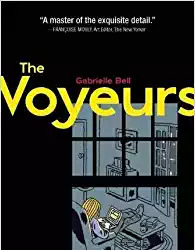
"The Voyeurs is the work of a mature writer, if not one of the most sincere voices of her literary generation. It's a fun, honest read that spans continents, relationships and life decisions. I loved it."—Chris Ware, Acme Novelty Library
"As she watches other people living life, and watches herself watching them, Bell's pen becomes a kind of laser, first illuminating the surface distractions of the world, then scorching them away to reveal a deeper reality that is almost too painful and too beautiful to bear."— Alison Bechdel, Fun Home
"A master of the exquisite detail, Bell provides a welcome peephole into our lives."—Françoise Mouly, The New Yorker
The Voyeurs, was named one of the best books of the year by Publishers Weekly, Kirkus Reviews, and the Atlantic.
Behind the Beautiful Forevers: Life, Death, and Hope in a Mumbai Undercity

In this brilliant, breathtaking book by Pulitzer Prize winner Katherine Boo, a bewildering age of global change and inequality is made human through the dramatic story of families striving toward a better life in Annawadi, a makeshift settlement in the shadow of luxury hotels near the Mumbai airport. As India starts to prosper, the residents of Annawadi are electric with hope. Abdul, an enterprising teenager, sees “a fortune beyond counting” in the recyclable garbage that richer people throw away. Meanwhile Asha, a woman of formidable ambition, has identified a shadier route to the middle class. With a little luck, her beautiful daughter, Annawadi’s “most-everything girl,” might become its first female college graduate.
Marbles: Mania, Depression, Michelangelo, and Me: A Graphic Memoir
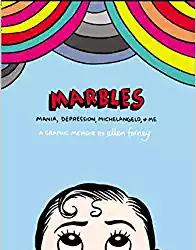
Cartoonist Ellen Forney explores the relationship between “crazy” and “creative” in this graphic memoir of her bipolar disorder, woven with stories of famous bipolar artists and writers.
Shortly before her thirtieth birthday, Forney was diagnosed with bipolar disorder. Flagrantly manic and terrified that medications would cause her to lose creativity, she began a years-long struggle to find mental stability while retaining her passions and creativity.
Searching to make sense of the popular concept of the crazy artist, she finds inspiration from the lives and work of other artists and writers who suffered from mood disorders, including Vincent van Gogh, Georgia O’Keeffe, William Styron, and Sylvia Plath. She also researches the clinical aspects of bipolar disorder, including the strengths and limitations of various treatments and medications, and what studies tell us about the conundrum of attempting to “cure” an otherwise brilliant mind.
Darkly funny and intensely personal, Forney’s memoir provides a visceral glimpse into the effects of a mood disorder on an artist’s work, as she shares her own story through bold black-and-white images and evocative prose.
The Woman in Cabin 10
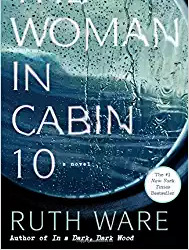
From New York Times bestselling author of the “twisty-mystery” (Vulture) novel In a Dark, Dark Wood, comes The Woman in Cabin 10, an equally suspenseful and haunting novel from Ruth Ware—this time, set at sea. In this tightly wound, enthralling story reminiscent of Agatha Christie’s works, Lo Blacklock, a journalist who writes for a travel magazine, has just been given the assignment of a lifetime: a week on a luxury cruise with only a handful of cabins. The sky is clear, the waters calm, and the veneered, select guests jovial as the exclusive cruise ship, the Aurora, begins her voyage in the picturesque North Sea. At first, Lo’s stay is nothing but pleasant: the cabins are plush, the dinner parties are sparkling, and the guests are elegant. But as the week wears on, frigid winds whip the deck, gray skies fall, and Lo witnesses what she can only describe as a dark and terrifying nightmare: a woman being thrown overboard. The problem? All passengers remain accounted for—and so, the ship sails on as if nothing has happened, despite Lo’s desperate attempts to convey that something (or someone) has gone terribly, terribly wrong…
1222
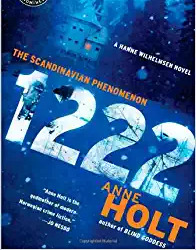
Nominated for the Edgar Award for Best Novel, from Norway’s #1 bestselling female crime writer—a “beguiling” (The Washington Post) “good old-fashioned murder mystery” (The New York Times Book Review) set in an isolated hotel where guests stranded during a monumental snowstorm begin turning up dead. A train on its way to the northern reaches of Norway derails during a massive blizzard, 1,222 meters above sea level. The passengers head for a nearby hotel, centuries old and practically empty. With plenty of food and shelter from the storm, the evacuees think they are safe, until one of them turns up dead. With no sign of rescue and the storm raging, retired police inspector Hanne Wilhelmsen is asked to investigate. Paralyzed by a bullet lodged in her spine, Hanne has no desire to get involved. But when another body turns up, panic takes over. Complicating things is the presence of a mysterious guest, a passenger who traveled in a private rail car and now stays secluded on the top floor of the hotel. No one knows who the guest is, or why armed guards are needed. Hanne has her suspicions. Trapped in her wheelchair, trapped by the storm, and now trapped with a killer, Hanne knows she must act before the killer strikes again.
Robot Dreams
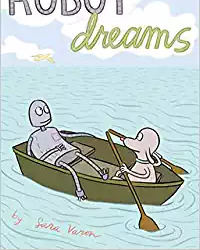
A Kirkus Reviews Best Book of the Year A PW Best Book of the Year An ALSC Notable Children’s Book A YALSA Great Graphic Novel
This moving, charming graphic novel about a dog and a robot shows us in poignant detail how powerful and fragile relationships are.
Borderlands / La Frontera: The New Mestiza

Rooted in Gloria Anzaldúa's experience as a Chicana, a lesbian, an activist, and a writer, the essays and poems in this volume profoundly challenged, and continue to challenge, how we think about identity. Borderlands / La Frontera remaps our understanding of what a "border" is, presenting it not as a simple divide between here and there, us and them, but as a psychic, social, and cultural terrain that we inhabit, and that inhabits all of us.
Hyperbole and a Half: Unfortunate Situations, Flawed Coping Mechanisms, Mayhem, and Other Things That Happened
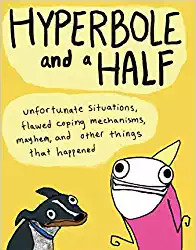
Every time Allie Brosh posts something new on her hugely popular blog Hyperbole and a Half the internet rejoices. This full-color, beautifully illustrated edition features more than fifty percent new content, with ten never-before-seen essays and one wholly revised and expanded piece as well as classics from the website like, “The God of Cake,” “Dogs Don’t Understand Basic Concepts Like Moving,” and her astonishing, “Adventures in Depression,” and “Depression Part Two,” which have been hailed as some of the most insightful meditations on the disease ever written.
Salt, Fat, Acid, Heat: Mastering the Elements of Good Cooking

Now a Netflix series! New York Times Bestseller and Winner of the 2018 James Beard Award for Best General Cookbook and multiple ICAP Cookbook Awards Named one of the Best Books of 2017 by: NPR, BuzzFeed, The Atlantic, The Washington Post, Chicago Tribune, Rachel Ray Every Day, San Francisco Chronicle, Vice Munchies, Elle.com, Glamour, Eater, Newsday, Minneapolis Star Tribune, The Seattle Times, Tampa Bay Times, Tasting Table, Modern Farmer, Publishers Weekly, and more. A visionary new master class in cooking that distills decades of professional experience into just four simple elements, from the woman declared “America’s next great cooking teacher” by Alice Waters.
Monstress Volume 1: Awakening
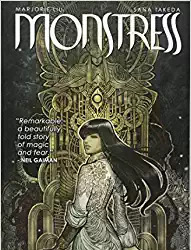
Set in an alternate matriarchal 1900's Asia, in a richly imagined world of art deco-inflected steam punk, MONSTRESS tells the story of a teenage girl who is struggling to survive the trauma of war, and who shares a mysterious psychic link with a monster of tremendous power, a connection that will transform them both and make them the target of both human and otherworldly powers. About the Creators: New York Times bestselling and award-winning writer Marjorie Liu is best known for her fiction and comic books. She teaches comic book writing at MIT, and leads a class on Popular Fiction at the Voices of Our Nation (VONA) workshop.
Persepolis
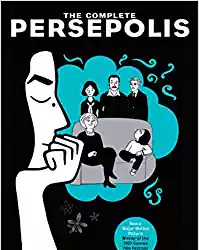
Marjane Satrapi's best-selling, internationally acclaimed graphic memoir. Persepolis is the story of Satrapi's unforgettable childhood and coming of age within a large and loving family in Tehran during the Islamic Revolution; of the contradictions between private life and public life in a country plagued by political upheaval.
Nobody Nowhere: The Remarkable Autobiography of an Autistic Girl
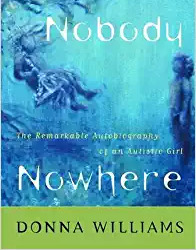
Donna Williams was a child with more labels than a jam-jar: deaf, wild disturbed, stupid insane... She lived within herself, her own world her foreground, ours a background she only visited. Isolated from her self and from the outside world, Donna was, in her words, a Nobody Nowhere. She swung violently between these two worlds, battling to join our world and, simultaneously, to keep it out. Abandoned from all connection to the self within her, she lived as a ghost with a body, a patchwork of the images which bombarded her. Intact but detached from the seemingly incomprehensible world around her, she lived in what she called 'a world under glass`.
After twenty-five years of being misunderstood, and unable to understand herself, Donna stumbled upon the word 'autism': a label, but one which held up a mirror and made sense of her life and struggles, and gave her a chance to finally forgive both herself and those around her.
The Ice Princess

The psychological thriller debut of No.1 bestselling Swedish crime sensation Camilla Lackberg.
A small town can hide many secrets
Returning to her hometown after the funeral of her parents, writer Erica Falck finds a community on the brink of tragedy. The death of her childhood friend, Alex, is just the beginning. Her wrists slashed, her body frozen in an ice-cold bath, it seems like she’s taken her own life.
Meanwhile, local detective Patrik Hedström is following his own suspicions about the case. It’s only when they start working together that the truth begins to emerge about a small town with a deeply disturbing past…
The Vampire Chronicles: Interview with a Vampire, The Vampire Lestat, and The Queen of the Damned

In 1976, nearly 80 years after Bram Stoker published Dracula, Anne Rice's bestselling first novel, Interview with the Vampire, breathed new life into the vampire myth. Now, in one chilling volume, here are the first three classic novels of The Vampire Chronicles; Interview with the Vampire, The Vampire Lestat, and Queen of the Damned.
Adulthood is a Myth: A Sarah's Scribbles Collection
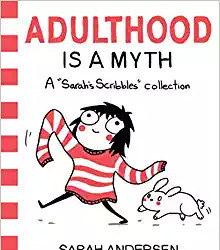
Do you love networking to advance your career? Is adulthood an exciting new challenge for which you feel fully prepared? Ugh. Please go away. 2016 GOODREADS CHOICE AWARD WINNER FOR GRAPHIC NOVELS AND COMICS! These casually drawn, perfectly on-point comics by the hugely popular young Brooklyn-based artist Sarah Andersen are for the rest of us. They document the wasting of entire beautiful weekends on the internet, the unbearable agony of holding hands on the street with a gorgeous guy, and dreaming all day of getting home and back into pajamas. In other words, the horrors and awkwardnesses of young modern life. Oh and they are totally not autobiographical. At all.
Nimona
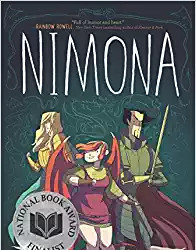
Indies Choice Book of the Year * National Book Award Finalist * New York Times Bestseller * New York Times Notable Book * Kirkus Best Book * School Library Journal Best Book * Publishers Weekly Best Book * NPR Best Book * New York Public Library Best Book * Chicago Public Library Best Book
The New York Times bestselling graphic novel sensation from Noelle Stevenson, based on her beloved and critically acclaimed web comic. Kirkus says, “If you’re going to read one graphic novel this year, make it this one.”
Nemeses! Dragons! Science! Symbolism! All these and more await in this brilliantly subversive, sharply irreverent epic from Noelle Stevenson. Featuring an exclusive epilogue not seen in the web comic, along with bonus conceptual sketches and revised pages throughout, this gorgeous full-color graphic novel has been hailed by critics and fans alike as the arrival of a “superstar” talent (NPR.org).
Cultural Anthropology Barbara Miller

Cultural Anthropology presents a balanced introduction to the world’s cultures, focusing on how they interact and change. Author Barbara Miller provides many points where readers can interact with the material, and encourages students to think critically about other cultures as well as their own. Featuring the latest research and statistics throughout, the eighth edition has been updated with contemporary examples of anthropology in action, addressing recent newsworthy events such as the Ebola epidemic.
Captain Marvel Volume 1: Higher, Further, Faster, More
Kelly Sue Deconnick
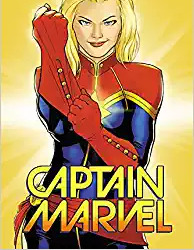
Hero! Pilot! Avenger! Captain Marvel, Earth's Mightiest Hero with an attitude to match, is back and launching headfirst into an all-new ongoing adventure! As Captain Marvel, a.k.a. Carol Danvers, comes to a crossroads with a new life and new romance, she makes a dramatic decision that will alter the course of her life - and the entire Marvel Universe - in the months to come. But as Carol takes on a mission to return an alien girl to her homeworld, she lands in the middle of an uprising against the Galactic Alliance! Investigating the forced resettlement of Rocket Girl's people, Carol discovers that she has a history with the man behind the plot. But when the bad guy tries to blackmail Carol and turn the Avengers against her, it's payback time! Guest-starring the Guardians of the Galaxy!
7 notes
·
View notes
Text
FOMA 18: Building Up the Screen - The Rise and Fall of the Mexican Cinema Spaces
In today’s digital era, its is difficult to think of the experience of going to the movies as something related to a grand design or glamorous spaces, but rather a generic and multipliable model of the contemporary movie theater, a globalized phenomenon where the experience is limited to the world on the screen.

Cine Olimpia Opening Poster (1921). | Photo via Mexican Silent Cinema
For this Forgotten Masterpieces edition Tania Tovar Torres revisited the history of the fallen heroes of the grande époque of cinematographic palaces that contributed to the consolidation of the modern image of the city during the golden age of the Mexican Cinema. In a time when film theaters were buildings with grandiloquent conditions as the movies exhibited in their spaces, and the reason why their aesthetic and formal conception was intended to have palace-like features.

Cine Encanto (1937) by Francisco Serrano was lost in the earthquake of 1957. | Photo via Archivo Francisco Serrano
From the old atmospheric to environmental cinemas looking to generate from a built imaginary a particular experience, they have since included exoticisms, far away lands, esoteric worlds and references to the unknown held within their walls. Today, they have slowly turned into ruins and dust to give place to a new era, no more related to its physical architecture but to those ones on the screen, where it has set its new limits not without nostalgia.
After the Revolution (1920s)
The Mexican Revolution marked a great gap in the realization of fiction films in Mexico. At the moment, the main import of films to Mexico came from Europe; the US had not yet been fully established as a film producing center, and the tense relations between Mexico and the US, together with the stereotypical image of the Mexican bandit led to rejection, both officially as well as popular, towards many American films. France and Italy became the patterns to follow for the reopening of the Mexican Fiction cinema in 1917.

Cine Olimpia from 1927. | Photo via Mensajero Paramount
By 1920s, the frictions with the northern neighbor had softened, Hollywood began to conquer markets across the world, and the cinema became witness to a world transformation. However, The Russian as well as the Mexican revolutions, had marked the way of thought of the country. The Mexican intelectual scene was divided between revolution and socialism. This environment, wasn’t a stranger to the tendency that the Mexican cinema followed once established the basis of the national cinematographic industry, where politics and art pointed towards revolution as the main topic which the new industry followed.

Cine Olimpia (1921). | Photo via México en Fotos
One of the first pioneer projects of what would eventually become the architectural program of the theaters-cinemas of the 1920’s was the Olimpia Cinema (whose original construction dates 1916), re-opening its doors to the public on 1921. With a capacity of 4,000 seats, it hosted two ballroom salons, a smoking room, two halls and a Wurlitzer pipe organ. Located on the City’s historical centre, it became the stage where Carlos Chávez, Agustín Lara and Manuel Esperón came to musicalize mute films. The Olimpia was one of the first theaters with sound, and projected the first ever sound film, Alan Crossland’s The Jazz Singerin 1927.

Cine Olimpia, Theater interior (1921). | Photo via Mexican Silent Cinema
After 1920, the Mexican Cinemas maintained a uneven race against the growing popularity of the Hollywood films. From the Olimpia, XEW started radio transmissions in 1930. By 1941, the theater was remodeled by Carlos Crombé, and remained like that until 1995 when its was fragmented into multiple theaters and then ended operations in 1999.
Despite of sound having been incorporated into the the cinema in 1927, in Mexico it happened until 1929. A new version of Santa (1931) was the first successful Mexican film to incorporate direct optical sound, recording with a parallel sound band the images of the same film, that revolutionized the way to obtain the perfect synchrony between image and sound in the theaters.
The Golden Age (1930s)
For some historians, the true golden years of the Mexican cinema correspond with World War II; however, years before it started, the Mexican Cinema had already reached great technical and artistic level, and had a well established market.

Cine Ópera (1947). | Photo via MXCITY Guía Insider

Cine Ópera (2015). | Photo via MXCITY Guía Insider

Cine Ópera, Reception Hall (1947). | Photo via Social Climber
Big North-American cinematographic studios supported altogether the development of the national cinemas for strategic reasons and to keep control over Mexicans in a time of Communist influence, which translated into a mass media strategy over the scarcely educated and easily influenced Mexican population.

Cine Ópera, Upper Level Hall (2015). | Photo via MXCITY Guía Insider
From the 20’s on until the late 60’s a generous period for the construction of this typology was held in Mexico, when a strong impulse on Cinema edification brought to life a number of the greatest theaters in town, as an answer to international events and the explosion of the Mexican Film scene. The 1930’s and 40s became the decades when the “Dream Palaces” like the Ópera, Orfeón and Palacio Chino Cinemas were built.

Cine Ópera, Theater (2015). | Photo via MXCITY Guía Insider
Commissioned to Architects Félix Nuncio and Manuel Fontanal in 1947, the Ópera Cinema was intended to reincarnate the peculiarities of Art Deco as part of the apogee of the Mexican Golden Age, involving its glory on each decorative feature -stairs, balconies, frames, doors, lamps and seats. Its facade, held then two female statues wearing the tragedy and comedy masks, where Mexico City was the exquisite repertoire of details and histories. From its opening on 1949 the Ópera Cinema became one of the most populars in the Mexican capital for decades.

Cine Orfeón (1938). | Photo by Juan Guzmán, FotográficaMX
For 44 years, it operated as a cinema and theater until it started its decline after the cracking of one of its screens during the 1985 earthquake. After that, the Ópera Cinema remained very quiet until 1993 when its was taken again as a concert hall, however, due to an altercate with the British band Bauhaus, the place closed for good on October 12, 1998.

Cine Orfeón (2016). | Photo by Karina Áviles, El Exclesior
A similar fate is shared by other cinemas like the Orfeón, the colossal theater hosting up to 4628 seats. Originally built in 1938, it re-opened in 1948 after a remodeling into Art Deco style under American architects John y Drew Eberson, the Orfeón was part of the renowned premier theaters, together with the Alameda (destroyed during the ’85 earthquake) the Metropólitan and the Palacio Chino. Remembered for being one of the largest and the long queue lines to get in, the theater of this cinema was constituted by the lunette, the box, and a gallery that allowed to receive up to 6000 visitors. Today, these three cinemas are occasionally used as event theaters.

Cine Palacio Chino (1940). | Photo via La Ciudad en el Tiempo

Cine Palacio Chino (2018). | Photo via Dulce Ahumada, Más por Más
Cinematic Urban Sprawl (1940s)
The boom of the Mexican Cinema favored the uprising and consolidation of an authentic frame of national stars that would become the main figures in a precedent-less star system in the history of the cinema in Spanish. During those years, the Mexican Cinema explored more themes and genres than ever before, especially the “ranchera” comedy genre, cultivated in Mexico without paragon in the rest of the world due to its Mexican culture and idiosyncrasy.

Centro Cultural Bella Época (2018). | Photo by Ligia Bang, Revista Fernanda

Centro Cultural Bella Época, interior (2017). | Photo by Christian Gama, Progreso
Its internationalization came with the film ¡Ay Jalisco, no te rajes! (1941) interpreted by Jorge Negrete, and its ulterior ending came with the demise of the popular actor and singer, Pedro Infante in 1957.

Cine París (1954). Juan Sordo Madaleno and Jaimes Ortiz Monasterio | Photo via Una Vida Moderna

Cine Arcadia (1936). Turned into a Parking Lot. | Photo Unknown source
Literary pieces, comedies, police movies, musicals and melodramas formed part of the Mexican cinematographic inventory of those years. Also, by the end of this period a new genre would be instated that as the rancheras comedies, had no rivals outside Mexico: the “Luchas” genre or Lucha Libre films. Because of this, the construction boom of elegant and palace-like cinemas proliferated particularly in the city center, but they slowly extended to the surroundings, a phenomenon linked to the urbanization of the neighborhoods of the time.

Cine Lido (1942). | Photo by Juan Guzmán, FotográficaMX
Located today in the Hipódromo CondesaNeighborhood, the Lido Cinema was the first movie theater located outside the city center. Designed by Charles S. Lee, its was based on Art Deco style and designed to host approximately 1310 viewers. The architectural trends at the time gave to the building influences of the Californian Colonial and Spanish Revival styles, taking old ancient Spanish and Mudejar elements, where its most important compositional elementwas a 20 meters tall tower located in the entrance, framed by the marquee.

Cine Lido, Theater (1942). | Photo via Sinapsis MX
The Lido opened in 1942 and ran three decades of famous reputation. However, in 1978 its decadence started due to an increment in admission prices and to the establishment of newer cinemas with more attractive facilities from comercial chains. Despite an attempt of remodeling and re-opening under the name Bella Epoca Cinema in 1980, the prices and competitions couldn't be stopped and by 1999 the Mexico City Government acquired the estate that was later sold to the Economical Culture Endowment, and with the support of the neighbors that sought the protection of the building as a cultural space, Mexican architect Teodoro González de León was commissioned to remodel the space, today the building stands as the Bella Epoca Cultural Centre.

Cine Lindavista (1942). | Photo via La Ciudad en el Tiempo

Cine Lindavista (1942). | Photo via La Ciudad en el Tiempo

Cine Lindavista (1942). | Photo by William Gabel, Cinemas Treasures
The Lindavista Cinema opened too on 1942. Built in a traditional monastery scheme, this cinematographic monument in the north of the city took advantage of its location in a corner, with a tall tower that stood up as a urban beacon above a roundabout and marquee where the ticket booth was held and the complex integrated the enormous entrance door to an open space. The architectural proposal of the Lindavista cinema was of simple characteristics in its composition and saturated in neocolonial details that made for a resemblance to the old catholic temples of the viceroyalty. The entrance to the theater was defined by a large arch and two dome volumes that conformed the facade. In the 1970s, the building suffered a great change as it became a children cinema, for which its interior decorations were traded for animal kingdom cartoons, and the tower was painted to resemble the Disney World castles. The cinema was closed and short after, abandoned. In time, the building underwent a slow transformation on an incomplete process to become the San Juan Diego Sanctuary.

Cine Lindavista - Sa (2017). | Photo by Archive Fhasaov
The Mexican cinematography also tried to develop and consolidate a realistic tradition. Marked by the time where diverse realisms reached its classic dimension, the work of Alejandro Galindo - framed between 1938 and 1953 - is one of most significant of the Mexican Social Cinema. The intentions of the Mexican realistic cinema reached a new dimension in Campeón sin Corona (1945) directed by Galindo. The movie offered a detailed psycho-sociological study of the historical, racial and cultural conditions that, according to a certain perspective of the time, determined the Mexican lower class. The genre showed the life of the neighborhood of the city, reflecting the growing urbanization phenomenon of the country.

Cine Lindavista (2017). | Photo via Dulce Ahumada, Más por Más
Next to the big theaters, smaller neighborhood cinemas also known as “de piojito”(cuddling places) were built and survived with the second run programming, but eventually turned into spaces of coexistence for a social sector that was growing, where the city and the cinemas, managed to develop a close and daily relation with their environment while leaving a mark in their audiences. Going to the movies during this time, was a unique sensorial experience. It was a motive for families to move to the cinemas; seeing the announcement of the film with the light bulbs on at the entrance marquee showing what was projected, preparing its audience to an immersive experience; go the the candy-shop during the film break and comment among them the movie.
Modern Decline (1950s)
By the 1950’s, the projection theaters proliferated but in functionalist and modern buildings, like the Roble, Continental and Las Americas Cinemas. The Theater El Roble opened in 1950, and was one of the most spectacular and elegant cinemas that the city had.

Cine El Roble (1950). | Photo via Colección Carlos Villasana, Más por Más
The theater with three gallery floors, was one of a kind in Mexico. It was the venue where all the luxurious international movie premiers and cultural events of the 60’s and 70’s were held. Its neoclassical interiors with its yessum sculptures, beveled glass niches for its water fountains and smoking salons, however, suffered severe damage during an earthquake in 1979. A slow agony that ended fifteen years after when its was demolished.

Cine Las Americas. José Villagrán García. Movie Theater lost in the earthquake of 1957. | Photo via Colección Carlos Villasana, Más por Más
The first transmission of the Mexican Television initiated in 1950. Soon after, the television reached an enormous penetration power into the audience. Television antennas became something common in the the Mexican household, an while the first image of the television in black and white appeared in a small oval screen very much imperfect and lacked the resolution of the cinematographic image; the television represented the competition of the new medium, influencing decisively cinematic history, forcing it to look for new outcomes technically, but also thematically and genre-wise. Wider screens, 3D cinemas and an improvement in color and stereophonic sound, where some of the innovations of the North-American cinema in the early 50’s. The elevated cost of the technology made it hard for Mexico to produce films with the same characteristics. With an antiquated infrastructure, little money, a more demanding public, and a saturated market of North-American productions, the Mexican Cinemas faced its own dawn.

Cine Continental (1958). | Photo via Algarábia
The cinemas became a unique spectacle accessible to all audiences. Among all the memories, there were still those of the cinemas distinguished for their thematic. In 1958, the Continental cinema was opened with a capacity of 2350 seats that operated as an exhibition theater for national and international films for 15 years, before closing doors to be remodeled and become La Casa de Disney (The house of Disney) on 1974.

Cine Continental / La Casa de Disney (1980). | Photo via La Ciudad de México en el Tiempo
The theater had the peculiarity of having restrooms designed for its young audience, but more important was its facade that had been transformed to look like the Disneyland trademark Castle. Even though the Continental preserved its original program for many years, the building didn’t escape the transformation at the end of the XX century. In 1998, its main projection salon was divided into eight theaters equipped with dolby sound system and reclining seats, becoming the Multimax Continental Cinema. The Continental is considered the only children’s cinema to ever exist in Mexico of those dimensions before closing its doors for good in 2008, waiting as a graffitied and deteriorated estate to become a self-service store.

Cine Continental (2014). | Photo by Carmen García Bermejo, El Financiero
By the end of the 50’s the Mexican cinema was experiencing an almost complete inertia. The traditional formulas had exhausted its entertaining capacity and had began to repeat the films with other actors but with the same themes to an everyday more indifferent audience. By the end of the decade, the Mexican Cinema crisis was not only advertible to those who knew its economical problems: the same tired, routinely and vulgar tone, and a lack of inventiveness and imagination only evidenced the end of an era. The censorship removal in the U.S. allowed for more bold and realistic themes: France had a young generation of filmmakers educated in the the cinematographic critiquethat started a new movement; in Italy, neorealism had affirmed the career of new directors. In the meanwhile, the Mexican Cinema struggled with bureaucratic and union problems. The production was concentrated on a few hands and the possibility of new filmmakers to emerge was almost impossible. By making the cinema an affair of national interest of the Mexican government, they were digging the industry’s own grave.
From castles to multi-cinemas (1970s)
Upon the 1970s, the government used the cinema, radio and television as a formal means of national and international communication for the first time in political history. The cinemas experienced a virtual nationalization; something particular for a non-socialist country. But among the changes, the Cinematographic National Bank received a thousand million pesos investment to modernize the technical and administrative apparatus of the national infrastructure. It was precisely during the 70’s when the small and majestic theaters began to be fragmented and displaced by the multi-cinemas predecessors to the multiplex model.

Multicinemas La Raza (1970). | Photo via Cazadores de Mentes
These were spaces designed with three or more theaters equipped with more modern technology. Among them, there were La Raza, Universidad and Satélite Multi-cinemas located in the outskirts of the city. The 70’s started a process of new exhibition models and new types of facilities; smaller and well distributed in different points of the city; the larger cinemas were fragmented and changed programing, while others disappeared.

Multicinemas Universidad (1969). | Photo via Archivo Sordo Madaleno Arquitectos
The technological exhibition development, the crisis of the Mexican theaters, the exhaustment of the exhibitions model in Mexico, as well as the 1985 earthquake that destroyed many of those old big theaters, affected the urban surroundings where they were located turning them unsafe, dirty and therefore driving people away. The 90’s disappeared the last Theaters Operated by governmental organisms that subsidized the exhibition and distribution of Mexican cinema in the country, and the so called New Mexican Cinema underpinned the “quality cinema”.

Multicinemas Satélite Information Napkin (1914). | Photo via Los Satelúcos
In the coming years, the Mexican cinema slowly recovered. However, the cinematographic palaces built to host it, proved to be obsolete and were almost forgotten. Today the Mexican film industry shall live in the thousands of movie theaters of multiplex Mexican empires Cinemex and Cinepolis around the world, and in the memories behind each demolition of those old temples that gave them sustenance.
___
#FOMA 18: Tania Tovar Torres

Tania Tovar is an architect, writer and curator with an interest for narratives where architecture stands as main character. She graduated from the National Autonomous University of Mexico; studied at the Stuttgart State Academy of Fine Arts in Germany; and holds a Masters in Critical, Curatorial and Conceptual Practices in Architecture from the Columbia Graduate School of Architecture, Planning and Preservation in New York. She is founder of Proyector, a curatorial platform an exhibition space based in Mexico City. She is a Consultant for the German Cooperation Agency for Sustainable Development in Mexico; and has previously worked at the Canadian Centre for Architecture in Montreal, the Arthur Ross Architecture Gallery in New York, the Museum of Science and Art and the National Council for Educational Development in Mexico City.
94 notes
·
View notes
Text
Bookshelf Briefs 3/16/21
Blood on the Tracks, Vol. 4 | By Shuzo Oshima | Vertical Comics – The first volume of Blood on the Tracks was suspenseful and shocking and I enjoyed that, but the next two installments were extremely disturbing because they basically depicted a mentally ill mother damaging her son in real time. I debated dropping the series, but decided to give it one more volume, and I’m glad I did. Seiichi finally has an ally, witness, and savior in the form of Fukiishi, his first girlfriend (who has her own shitty parent to contend with) and on the one hand it’s so great to see him finally have someone who knows exactly how terrfiying Seiko is and who gives him the courage to stand up to his mother. On the other hand, we saw what Seiko did to the last person who threatened to lead Seiichi away from her control. What is she going to do to Fukiishi? I’m simultaneously scared and hopeful. – Michelle Smith
How Do You Do, Koharu?, Vol. 1 | By Kanae Hazuki | Kodansha Comics (digital only) – If you’re wondering what you need to know from Say I Love You. to read this, the answer is nothing whatsoever—this takes place years later, and the only common connection is “Koharu” herself (real name Nagi). Instead, the book is a very good look into the life of those who livestream, and how a shared online connection can be unwanted… or scary… when meeting in real life. Especially as Koharu also works as a maid cafe, and has to deal with customers who also want to get up in her space. Koharu isn’t sure what she wants here, and the connections she makes with Shun are tentative. Negotiating modern relationships can be tough, but this looks like another fun shoujo series. – Sean Gaffney
A Journal of My Father | By Jiro Taniguchi | Ponent Mon – Whenever a new volume of Taniguchi’s manga is released in English it’s worth taking note, especially when it’s a lovely hardcover edition from Ponent Mon. The most recent example of this is A Journal of My Father, a quiet, contemplative work that was originally published in Japan in 1994. The story’s premise is simple enough—a man travels back to his hometown in order to attend his father’s funeral—but the characterization in the work is notably complex. After some prompting, Yoichi Yamashita, who has both literally and figuratively distanced himself from his family, arrives in time for the wake. Over the course of the evening, reflecting on his childhood and stories told by others, Yoichi gradually comes to terms with the fact that his father was a much more complicated person than he previously realized. Part historical drama, part family portrait, A Journal of My Father works on multiple levels. – Ash Brown
My Hero Academia: Team-Up Missions, Vol. 1 | By Yoko Akiyama and Kohei Horikoshi | Viz Media – Sadly, this ended up being a bit of a disappointment. The premise suggested we’d be seeing a bit of the class that never gets attention, but no, it’s the same old main cast for the most part. It does get a bit better as it goes along. There’s two stories involving Melissa Shield, the original character from the first movie, which give her some nice depth, and also gives her a chance to team up with Mei, who is essentially her Japanese counterpart… though their personalities differ. The best of the team-ups involves Fatgum, Tamaki, Iida and Momo searching all over to try to find the handsome hero who saved a little girl… whose face she can’t quite remember. Could be better. – Sean Gaffney
Spy x Family, Vol. 4 | By Tatsuya Endo | Viz Media – This may be the best volume in the series to date, which is saying something. Yor kicking a car became an instant meme, but I think my choice for top moment has to go to the Handler’s description of what war is really like, in all its gory, violent tragedy. This is not to say that this volume is not also hilarious, be it Loid’s pathetic attempts at excusing himself to go be a spy, Anya’s horrid realization that she can’t read a clock, or everything Yor does in general, this is a winner. As an added bonus, DOGGO! Yes, we get a new cast member, and Bond is not only best doggy but also can SEE THE FUTURE! The series does a wonderful job balancing humor, fake dating, comedy and action equally, and is simply a must read. – Sean Gaffney
We’re New at This, Vol. 3 | By Ren Kawahara | Kodansha Comics (digital only) – The sexy is definitely amped up from the previous volume here. While our lead couple still have not managed to go all the way yet, they’re doing pretty much everything but, especially when Sumika has to change clothes after getting soaked in the rain in Ikuma’s office… and just strips completely naked. (Kudos, by the way, for not going with the standard comedy “someone walks in” here.) Elsewhere, it’s rapidly become clear that the reason that these two are not getting any further is simply that they find each other TOO ADORABLE, and are too busy squeeing to actually get it on. Frankly, if they ever fix that, the series is over, but for now, it’s funny, romantic and erotic in equal measure. – Sean Gaffney
A White Rose in Bloom, Vol. 1 | By Asumiko Nakamura | Seven Seas – Turns out that Nakamura-san can write yuri just as well as she writes BL. Honestly, the main reason to pick this up might be the faces—the artwork on the expressions throughout this volume is exquisite, and yes, I’m including the seemingly “steel” Steph, who slowly gets immersed in the walking disaster that is Ruby. (I almost typed RWBY there, and this would not need too much rewriting to be an AU fic there, to be honest.) There’s also some nice heartfelt emotion here, as Steph already has girls in love with her who are not happy with Ruby, and Ruby’s own home life may force her to leave the school soon anyway. This doesn’t have a volume two out in Japan yet, but volume one is still worth getting for yuri fans. – Sean Gaffney
Witch Hat Atelier, Vol. 7 | By Kamome Shirahama | Kodansha Comics – The majority of this volume is dedicated to Qifrey, his past (much of which is still a mystery to him), and possibly also explains why he was so quick to take pity on Coco for her own tragic experiments. Indeed, Coco’s mother comes up again for the first time in a while, and it’s hinted that she may very well be beyond saving, and that Coco will have to come to terms with that. Still, Coco is the living definition of “take a third option,” as this volume shows, and I think in the end she and Qifrey will be good for each other—even if he still has quite a bit of darkness residing within him. All this and the usual jaw-dropping artwork make me wonder why I waited so long to pick this up from my stack. – Sean Gaffney
By: Ash Brown
0 notes
Link
1.Anna Karenina by Leo Tolstoy
Pakistani monetary unit Karenina tells of the doomed romance between the esthetical and rebellious Pakistani monetary unit and therefore the dashing officer, Count Vronsky. Tragedy unfolds as Pakistani monetary unit rejects her passionless wedding and should endure the hypocrisies of society. Set against an enormous and richly rough-textured canvas of nineteenth-century Russia, the novel's seven major characters produce a dynamic imbalance, taking part in out the contrasts of town and country life and every one the variations on love and family happiness. whereas previous versions have softened the strong, and generally surprising, quality of Tolstoy's writing, Pevear and Volokhonsky have created a translation faithful his powerful voice. This triumph team's authoritative edition additionally includes associate illuminating introduction and informative notes. Beautiful, vigorous, and eminently decipherable, this Pakistani monetary unit Karenina are the definitive text for generations to come back.
2. Madame Bovary by Gustave Flaubert
For daring to look into the center of associate adulterer and enumerate its contents with profound unemotionality, the author of dame Bovary was tried for "offenses against morality and faith." What shocks North American nation these days concerning Flaubert's devastatingly complete tale of a woman destroyed by the reckless pursuit of her romantic dreams is its pure artistry: the poise of its narrative structure, the luxury of its prose (marvelously captured within the English translation of Francis Steegmuller), and its creation of a world whose minor figures are as important as its doomed heroine. In reading dame Bovary, one experiences a piece that continues to be genuinely revolutionary virtually a century and a [*fr1] when its creation.
3. War and Peace by Leo Tolstoy
Epic in scale, War and Peace delineates in graphic detail events leading up to Napoleon's invasion of Russia, and therefore the impact of the Napoleonic era on czarist society, as seen through the eyes of 5 Russian blue-blooded families.
4. The Great Gatsby by F. Scott Fitzgerald
The novel chronicles associate era that Fitzgerald himself dubbed the "Jazz Age". Following the shock and chaos of war I, yank society enjoyed new levels of prosperity throughout the "roaring" Nineteen Twenties because the economy soared. At the identical time, Prohibition, the ban on the sale and manufacture of alcohol as mandated by the Eighteenth Amendment, created millionaires out of bootleggers and crystal rectifier to a rise in social group, as an example the somebody mafia. though Fitzgerald, like Nick Carraway in his novel, adored the material resource and glamour of the age, he was uncomfortable with the unrestrained materialism and therefore the lack of morality that went with it, a form of degeneration.
5. Lolita by Vladimir Nabokov
The book is internationally renowned for its innovative vogue and disreputable for its arguable subject: the protagonist and unreliable speaker, middle aged Humbert Humbert, becomes obsessed and sexually attached a twelve-year-old lady named Dolores Haze.
6. Middlemarch by George Eliot
Middlemarch: A Study of Provincial Life could be a novel by George Eliot, the nom de plume of Mary Anne Evans, later female parent Evans. it's her seventh novel, begun in 1869 and so forgot throughout the ultimate malady of designer Lewes, the son of her companion patron saint Henry Lewes. throughout the subsequent year Eliot resumed work, fusing along many stories into a coherent whole, and through 1871–72 the novel appeared in serial type. the primary one-volume edition was printed in 1874, and attracted massive sales. Subtitled "A Study of Provincial Life", the novel is ready within the fictitious Midlands city of Middlemarch throughout the amount 1830–32. it's a multiple plot with an oversized solid of characters, and additionally to its distinct although interlocking narratives it pursues variety of underlying themes, together with the standing of girls, the character of wedding, idealism and self-interest, faith and hypocrisy, political reform, and education. The pace is leisurely, the tone is gently didactical (with associate auctorial voice that sometimes bursts through the narrative), and the
7.In Search of Lost Time by Marcel Proust
Swann's method, the primary a part of A la exquisite DE temps perdu, Marcel Proust's seven-part cycle, was printed in 1913. In it, Marcel Proust introduces the themes that run through the whole work. The speaker recollects his childhood, motor-assisted by the renowned madeleine; and describes M. Swann's passion for Odette. The work is uncomparable. Wilson same "[Proust] has provided for the primary time in literature identical within the full scale for the new theory of recent physics."
8. Don Quixote by Miguel de Cervantes
Alicia Alonso Quixano, a retired country gentleman in his fifties, lives in associate nameless section of l. a. Mancha together with his kinswoman and a domestic. He has become obsessive about books of chivalry, and believes their each word to be true, despite the very fact that several of the events in them are clearly not possible. Quixano eventually seems to others to possess lost his mind from very little sleep and food and since of such a lot reading.
9. Hamlet by William Shakespeare
The Tragedy of Hamlet, blue blood of Kingdom of Denmark, or additional merely Hamlet, could be a tragedy by Shakspere, believed to possess been written between 1599 and 1601. The play, set in Kingdom of Denmark, recounts however blue blood Hamlet exacts revenge on his uncle Tiberius Claudius Drusus Nero Germanicus, UN agency has dead Hamlet's father, the King, and so taken the throne and married Gertrude, Hamlet's mother. The play vividly charts the course of real and insincere madness—from overwhelming grief to agitated rage—and explores themes of treachery, revenge, incest, and ethical corruption.
10. Wuthering Heights by Emily Bronte
The narrative is non-linear, involving many flashbacks, and 2 primary narrators: mister. Lockwood and Ellen "Nelly" Dean. The novel opens in 1801, with Mr. Lockwood inward at Thrushcross farm, a grand house on the Yorkshire moors that he's rental from the ugly Heathcliff, UN agency lives at near Wuthering Heights. Lockwood is treated showing bad manners, and without emotion by the brooding, unsocial Heathcliff, and is forced to remain at Wuthering Heights for an evening as a result of one amongst the savage dogs of the Heights attacks him, and therefore the weather turns against him. The domestic cautiously takes him to a chamber to sleep through the night and warns him to not speak to Heathcliff concerning wherever he's sleeping, for he would get in deep hassle.
0 notes
Text
Across the Stars
From the incredible mind of legendary film composer, John Williams, who has brought to life the musical scores for massive movie classics, such as the Indiana Jones series, Jaws, and the Harry Potter franchise, comes one of the most beloved and recognizable movie soundtracks of all time: The Star Wars saga soundtrack.
Being a devoted fan of the series myself, I have to adore William’s instrumental score for years, as it brings a sense of energy, emotion, and emphathy to such a whimsical and thrilling extraterrestrial world, as the realm of Star Wars. Almost any person will immediately recognize the all-too-familiar opening credits theme, as well the daunting and ominous Imperial March music. Such music has stayed and lived with generations of fans for years. One piece in particular, that John Williams composed for the second prequel film in the saga, the 2006 film “Star Wars: Attack of the Clones“, struck me as arguably his most beautiful composition of the entire series. The piece: “Across the Stars”, which is the love theme for characters Anakin Skywalker and Padme Amidala, star-crossed lovers and parents to future heroes Luke Skywalker and Princess Leia.
Across the Stars, I find, is such a compelling song because it tells a story within its musical context. Anakin and Padme’s story is a tale of romance and tragedy, as they are married in secret, and are forced to be separated because of war, as well as Anakin’s obligations as a Jedi knight. The piece starts with a love, arpeggiated bass line on the harp, as well as a slow introduction on a group of violas, that continues throughout the piece. The theme’s main melody is introduced by an oboe, a soft yet strong sound that resonates over the strings. Horns join the score, a brief section before climaxing into an emotional and heartfelt climax by the violins and horns. The strings then dive into descending patterns, a pitch higher than the first. Suddenly, the piece takes a darker shift, representing the brewing danger surrounding the couple’s ill-fated love, and the piece enters a F minor key. This is followed by multiple phrases of the original melody, by trombones, an oboe, and trumpets. The music escalates, growing in dynamic and tempo, like the sounds of war and violence threatening to tear the two lovers apart. At the most crucial part of the piece, the orchestra explodes with the crashing sound of the cymbals, all the instruments returning to the main melody, until finally all the strings drop out, along with the tuba and low strings, which leads to the final repeat of the theme: an oboe solo of the original theme, followed by an English horn solo ending with one long note.
This piece is in a word exquisite. I have always been emotionally moved by its level of intensity, and the feeling of heartache laced within its score. The characters of Anakin and Padme continue to love one another, despite all the danger and threat to their marriage, which is displayed in the piece by the constant repetition of the main theme, like a vow of love that never breaks. The music is not a typical love ballad, with a sense of hope or an idealistic dream that love will conquer all. Rather, it is melancholy, a song that is well aware of the reality of pain and death that surrounds all of us. And yet, there is a single melody of love, that even if all else fails, it can be heard, and it will be heard again. Though Padme and Anakin never had a happy ending, their children’s legacy succeeds them, bring hope to the galaxy.
To find my favorite part of the song, listen for 4:38, when the final phrase of the main melody returns, after the chaotic climax, when all other instruments are quieted, and only the harp plays. It is like the sound of heart beat, so soft, possibly weakened, and yet the most pure and loving sound imaginable.
https://www.youtube.com/watch?v=9nk_WHHTQtY
0 notes
Text
Hyperallergic: Peace and Grief in the Art of US Veterans
Installation view, Not Alone: Exploring Bonds Between and With Members of the Armed Forces (photo by Phillip Maisel)
The San Francisco War Memorial Veteran’s Building hosts an eclectic group of arts organizations. For many years it housed the San Francisco Museum of Modern Art, several theaters, the San Francisco Arts Commission (SFAC) gallery, and an array of Veteran’s organizations. Today the art museum is long gone, but several arts and veterans-service organizations remain.
Honoring and advancing the building’s legacy, SFAC Director Meg Shiffler and co-curator Jason Hanasik have installed a powerful new exhibition in the Arts Commission Gallery. Not Alone: Exploring Bonds Between and With Members of the Armed Forces forges a bridge between the public at large and the Bay Area veteran’s community. Organized thematically, the exhibition begins with work related to the Vietnam War but has a stronger focus on America’s many conflicts from the 1980s to the present, including those in Iraq and Afghanistan. Shiffler and Hanasik have included artworks made by veterans as well as by their siblings and spouses. It is a deeply affecting exhibition and one that has evoked a strong response from the community. “The veterans who attend have been moved,” Shiffler told me, “and many have been back multiple times to spend more time with the show.” She added that the SFAC staff has been doing significant outreach to the general population. “Unlike other exhibitions, we’re finding that most visitors want to engage with the staff in various ways. We are a municipal gallery dedicated to engaging artists and artwork in exhibitions that promote civic dialogue, and Not Alone is anchoring an incredible foundation of respect, information flow, and open dialogue.”
Installation view, Not Alone: Exploring Bonds Between and With Members of the Armed Forces (photo by Yuqing Max Luo)
A tremendous amount of thought has gone into this show. “This is not an exhibition about war or the military-industrial complex,” Shiffler said. “It is about people who have served — about their hardships, pride, fears, relationships, and so much more.” The timing of the exhibition is intentional as well: It opened around Veterans Day and will remain on display through mid-March — coinciding with the beginning of the Trump presidency. “The reason this exhibition is so important in this extremely political moment is that it provides access to a complicated and difficult subject matter through the vehicle of storytelling that intends to open up and bridge dialogue between civilians and those who have served, individual to individual.”
Suzanne Orton, from the “Soldier + Citizen” series (2005): Soldier Wright, 366 days in Iraq; soldier Jimenez, killed in Iraq; soldier Hipwell, 382 Days in Iraq; soldier Kubalewski, 390 days in Afghanistan (photo courtesy of the artist)
The journey through this exhibition is intense and demands some time. Though not exactly a joyful show, it is one filled with beautiful and affecting works. Photography in particular is a stand-out medium with which to express the profoundly mixed emotions of war and peace. Suzanne Orton’s large-scale black-and-white photos from the series “Soldier + Citizen” (2005) are close-up portraits of American soldiers in between deployments, each of whom is being gently touched or embraced by a loved one. The hard, unwavering eyes of the soldiers looking away from the camera are a sharp contrast to the soft hands that touch their faces, hair, and necks, as if the warmth of a loved one’s embrace could break the spell of war. These are clearly posed portraits, and each has a delicacy and elegance of design that belies the underlying sadness of the subject.
Jessica Hines, from “My Brother’s War” (2008) (photo courtesy of the artist)
Jessica Hines’ project “My Brother’s War” (2007–16) is the artist’s sensitive attempt to reconcile and artistically reconnect with her brother, who committed suicide 10 years after his return from Vietnam. Using his letters and “souvenir” photos from the 1960s, Hinds went to Vietnam to retrace her brother’s steps. She has combined his now-vintage photos with imagery from her trip and snippets of his letters to create a visual narrative that weaves their two stories together. Many of the photos have the slightly “blasted” look of overexposed Kodachrome, and often the light is deliberately a bit too harsh, the color a little off-kilter. But the imagery is delicately constructed — echoing, perhaps, the elusive nature of memory. As part of the gallery’s ongoing public art installation along Market and Van Ness Streets, the curators have used these images to create 36 posters for outdoor public display on kiosks Printed large, they look like an almost psychedelic journey.
One of the most original projects in the show is by ceramicist Ehren Tool, who enlisted in the Marines in 1989 and served in both the Desert Shield and Desert Storm conflicts. After his discharge, Tool used the GI Bill to go to Pasadena City College and the University of Southern California. He then went on to receive his MFA at UC Berkeley in 2005.
Ehren Tool working in his studio surrounded by finished cups (photo by Yuqing Max Luo)
Tool has set up a potter’s studio in the SFAC gallery. He is in residence almost every weekend, throwing hundreds of cups, which, at the conclusion of the show, he will give away to the public. Onto these prosaic objects, he collages the imagery of war. Tool has invited the pubic to bring him imagery of violence, war, and trauma, as well as advertisements and ephemera of popular culture and news. Personal memorabilia from strangers and other veterans are turned into decals and used to decorate the surface of the vessels. Glazed with very typical ceramic colors — blue, brown, terra cotta — these cups seem ordinary, but when you look closely at them, the subject matter that emerges grabs at your heart. I asked Tool why he made cups and his answer was as eloquent as the work is powerful:
Peace is the only adequate war memorial. Everything else is at best a failure and usually something that glorifies war. I started making paintings and drawings and prints about the surreal experience of going to war and coming home and seeing your gas mask sold as a toy for children ‘ages 6 and up.’ Somehow, for me, the cup seems the appropriate scale to talk about war: hand-to-hand, person-to-person. Things get confused with scale. A cup is personal. Stalin said one death is a tragedy but a million deaths is a statistic. I think a million war dead is an incalculable tragedy. Making cups is a pretty small gesture in the face of all that is going on around the world, but it is what I have. I don’t think anything I do will change the world, but nothing in the world releases me from my obligation to try.
In a separate area of the gallery, Shiffler and Hanasik have installed a show within the show: a separate but related project entitled The Exquisite Corpse of the Unknown Veteran organized by Jeanne Dunning and Aaron Hughes. Within a highly structured set of guidelines, the curators asked 90 artists (both veterans and non-veterans) to play the Exquisite Corpse game: Three artists each worked on a total of 30 drawings, each one illustrating a different part of the same human image. The critical point here is that each artist was tasked with drawing the body parts of a real person, someone dead or alive who had been in war. The results are visually beautiful, but once you understand the details of the game, a chill runs up your spine. They are literally exquisite corpses.
“The Exquisite Corpse of the Unknown Veteran,” organized by Jeanne Dunning and Aaron Hughes, ongoing (photo by Phillip Maisel)
All in all, Not Alone is a very ambitious undertaking. I admire the curators’ commitment to an often overlooked segment of the Bay Area community, and in the midst of this incredibly divisive time, any attempt to bring disparate groups together in conversation is welcome. It helps that the level of discourse presented here is sophisticated, respectful, well-curated, and emotionally rich.
Not Alone: Exploring Bonds Between and With Members of the Armed Forces continues at San Francisco Arts Commission War Memorial Veterans Building (401 Van Ness Avenue, Suite 126, Civic Center Historic District, San Francisco) through March 18.
The post Peace and Grief in the Art of US Veterans appeared first on Hyperallergic.
from Hyperallergic http://ift.tt/2kp5SRK via IFTTT
0 notes